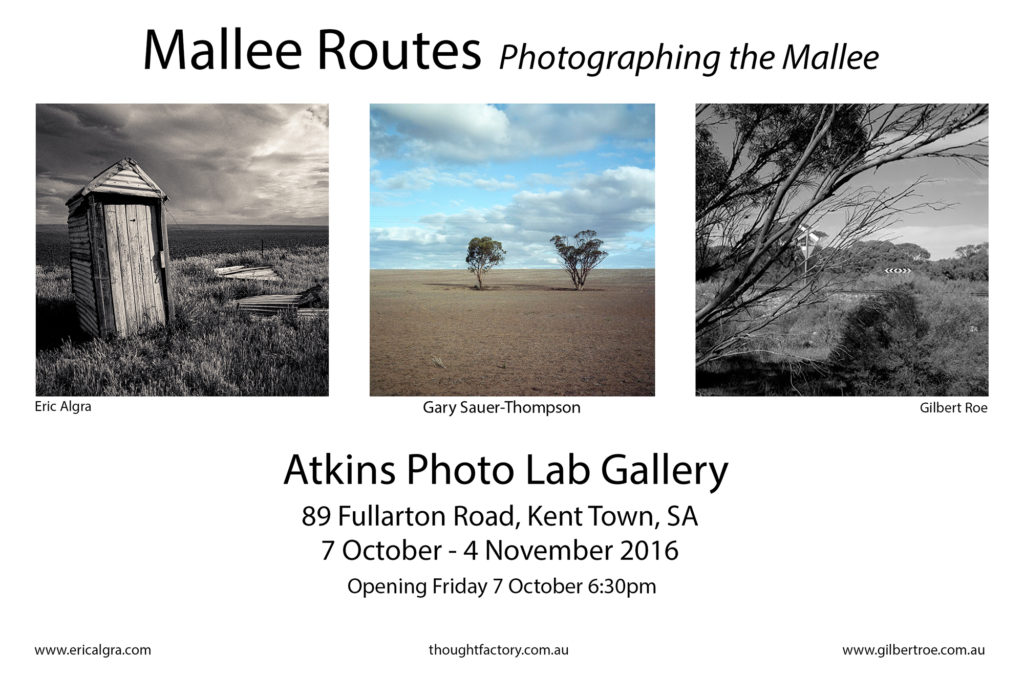We–Gilbert Roe, Eric Algra and myself-— are having an exhibition at the Atkins Photo Lab gallery opening October 7th, 2016. This is a kick starter exhibition for the project, as it were. We each have an individual section in the gallery for our images and a common space of shared images. It will be minimal from my perspective–I have the least number of the images in the exhibition- only 5 images— but I do have a number of cards, or 6×4 prints.
This week we have been working out the logistics of the exhibition–what images go in what spaces in the gallery, and how we divide the gallery space between the three photographers–and then hanging the exhibition. This is the poster for the exhibition that was created by Eric:

One of my interests in the Mallee Routes project is to connect our photography of the Mallee to the digital humanities, since the humanities have been traditionally committed to a non‐vocational, non‐instrumental pursuit of knowledge. Our photography of the Mallee is this kind of knowledge.
This desire to connect photography to the humanities is in opposition to a photographic culture in Australia that is primarily focused on technology and is hostile to texts, indifferent to academia, suspicious of aesthetics and assumes that as the image is everything, so there is no need for a critical writing about photographs.
Connecting our photography of the Mallee to the humanities is not that easy. First, online magazines like the Australian Humanities Review are centred around ways of reading texts rather than images. Secondly, the neo-liberal restructuring of society is transforming the humanities and forcing them to adapt to, accept, and come to terms with, their precariousness. The academic humanities as a teaching formation, academic career, and knowledge discipline appear precarious from a range of positions.


[…] was another archival image that didn’t make it into the opening exhibition of the Mallee Routes project at Atkins Photo Lab in […]
[…] the initial exhibition of the Mallee Routes project Atkins Photo Lab finishing at the end of November I needed to go on […]
[…] work in the Mallee Routes project–ie., some those pictures that have been made since our initial exhibition at the Atkins Photo Lab’s gallery in late 2016. We are currently waiting to hear if our […]